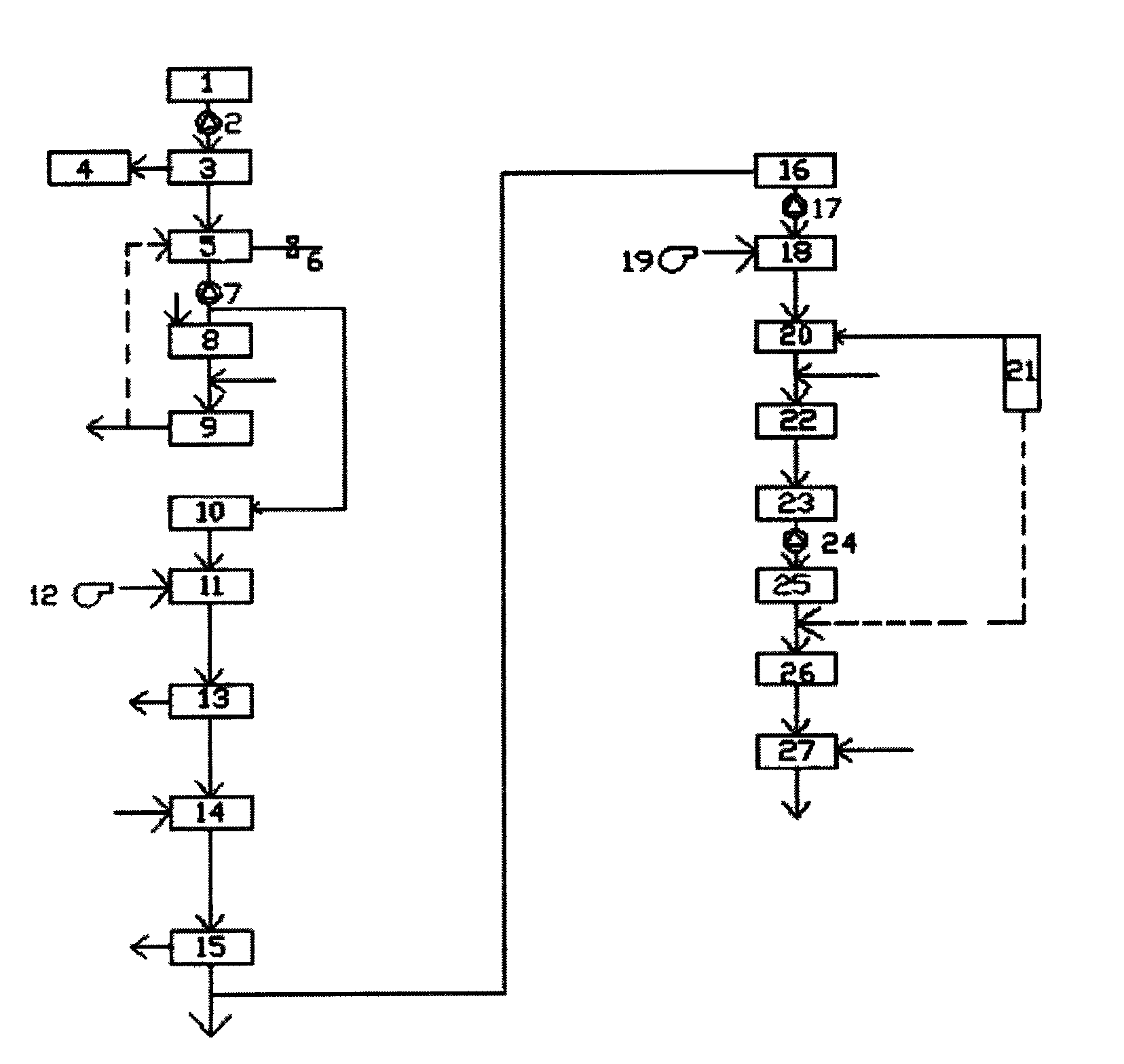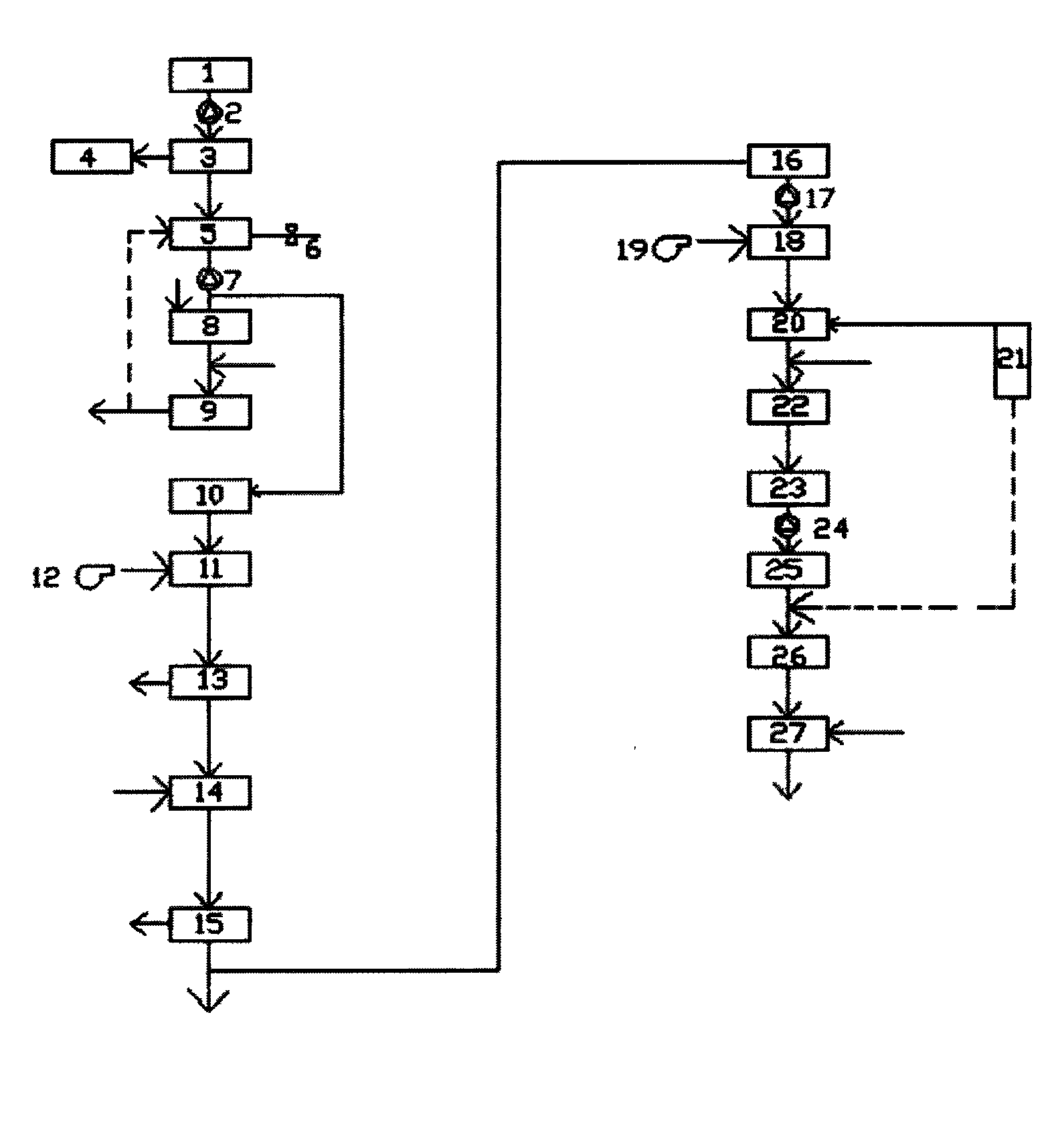Textile dyeing wastewater advanced treatment recycling technology
A technology for advanced treatment and textile dyeing and finishing, applied in textile industry wastewater treatment, water/sewage multi-stage treatment, neutralized water/sewage treatment, etc. problem, achieve the effect of improving biochemical treatment and reducing chroma
- Summary
- Abstract
- Description
- Claims
- Application Information
AI Technical Summary
Problems solved by technology
Method used
Image
Examples
Embodiment Construction
[0029] specific implementation plan
[0030] The present invention will be described in further detail below in conjunction with the accompanying drawings.
[0031] 1. Filtration, so that high-temperature, high-concentration printing and dyeing wastewater and softening temperature wastewater in production enter the grid net to remove textile fibers, and the size of the grid net is 10-20 mesh;
[0032] 2. To cool down, use a booster pump to pump the high-temperature wastewater into the heat exchanger and exchange it with the tap water countercurrently, so that the tap water absorbs the heat in the high-temperature wastewater and flows into the softening pool, so that the temperature of the high-temperature wastewater drops to 15°C-35°C and flows into the conditioning tank. In the pool, use the agitator in the regulating pool to even out the water quality and quantity;
[0033] 3. Neutralization, pumping the wastewater in the regulating tank to the hydrolysis acidification tank, ...
PUM
 Login to View More
Login to View More Abstract
Description
Claims
Application Information
 Login to View More
Login to View More - Generate Ideas
- Intellectual Property
- Life Sciences
- Materials
- Tech Scout
- Unparalleled Data Quality
- Higher Quality Content
- 60% Fewer Hallucinations
Browse by: Latest US Patents, China's latest patents, Technical Efficacy Thesaurus, Application Domain, Technology Topic, Popular Technical Reports.
© 2025 PatSnap. All rights reserved.Legal|Privacy policy|Modern Slavery Act Transparency Statement|Sitemap|About US| Contact US: help@patsnap.com


